Cars for Sale
1955 Gypsy Red Corvette Roadster
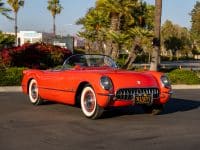
| Body Style: | Roadster |
| Exterior Color: | Red |
| Interior Color: | Beige |
| Transmission: | 2-spd automatic |
| Mileage: | 430 |
| Stock Number: | 6802 |
| VIN Number: | VE55S001599 |
| Drivetrain: | RWD |
| Engine: | 265/195hp V8 |
| Location: | In Stock |
Price :
$165,000
1956 Blue Corvette Convertible
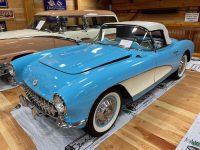
| Body Style: | Convertible |
| Exterior Color: | Blue |
| Interior Color: | Beige |
| Transmission: | 3-Speed Manual |
| Stock Number: | NA |
| Drivetrain: | RWD |
| Engine: | 265/225HP |
| Location: | Off Site |
1956 Fawn/White Ford Parklane two door Wagon

| Body Style: | Wagon |
| Exterior Color: | Fawn/White |
| Interior Color: | Fawn/Beige |
| Transmission: | 3-Speed Automatic |
| Stock Number: | NA |
| Drivetrain: | RWD |
| Engine: | 293ci V8 |
| Location: | Off Site |
1957 Cascade Green Corvette Fuel Injected Convertible
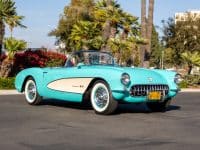
| Body Style: | Convertible |
| Exterior Color: | Cascade Green |
| Interior Color: | Beige |
| Transmission: | 4-Speed Manual |
| Mileage: | 215 |
| Stock Number: | 6803 |
| VIN Number: | E57S106313 |
| Drivetrain: | RWD |
| Engine: | 283/283hp F.I. |
| Location: | In Stock |
1957 Pearl White/Blue Corvette SS Styling Car

| Body Style: | Convertible |
| Exterior Color: | White |
| Interior Color: | Blue |
| Transmission: | 3-Speed Manual |
| Stock Number: | NA |
| VIN Number: | E57S0001589 |
| Drivetrain: | RWD |
| Engine: | 283/283hp F.I. |
| Location: | Off Site |
1958 Panama Yellow Corvette Fuel Injected Convertible
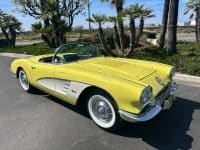
| Body Style: | Convertible |
| Exterior Color: | Yellow |
| Interior Color: | Charcoal |
| Transmission: | 4-Speed Manual |
| Stock Number: | 6833 |
| VIN Number: | J58S105364 |
| Drivetrain: | RWD |
| Engine: | 283/290hp F.I. |
| Location: | In Stock |
Price :
$139,900
1960 Sateen Silver Corvette
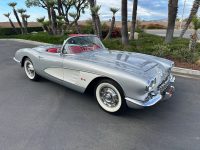
| Body Style: | Convertible |
| Exterior Color: | Sateen Silver |
| Interior Color: | Red |
| Transmission: | 4-Speed Manual |
| Mileage: | 67657 |
| Stock Number: | 6893 |
| VIN Number: | 00867S102039 |
| Drivetrain: | RWD |
| Engine: | 350ci V8 |
| Location: | In Stock |
1961 Tuxedo Black Corvette Fuel Injected Convertible
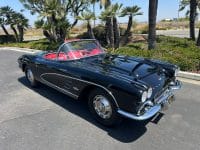
| Body Style: | Convertible |
| Exterior Color: | Tuxedo Black |
| Interior Color: | Red |
| Transmission: | 4-Speed Manual |
| Mileage: | 1577 |
| Stock Number: | 6840 |
| VIN Number: | 10867S101763 |
| Drivetrain: | RWD |
| Engine: | 283/315hp F.I. |
| Location: | In Stock |
Price :
$129,900
1962 Sateen Silver Corvette Convertible
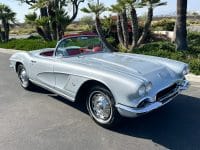
| Body Style: | Convertible |
| Exterior Color: | Sateen Silver |
| Interior Color: | Red |
| Transmission: | 4-Speed Manual |
| Stock Number: | 6835 |
| VIN Number: | 20867S105869 |
| Drivetrain: | RWD |
| Engine: | 327/340hp |
| Location: | In Stock |
Price :
$89,900
1964 Tuxedo Black Corvette Fuel Injected Tanker
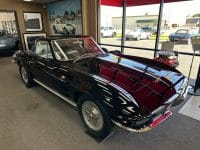
| Body Style: | Coupe |
| Exterior Color: | Tuxedo Black |
| Interior Color: | Silver |
| Transmission: | 4-Speed Manual |
| Mileage: | 13232 |
| Stock Number: | 6877 |
| VIN Number: | 40837S112131 |
| Drivetrain: | RWD |
| Engine: | 327/375hp Fuel Injected |
| Location: | In Stock |
1964 Riverside Red Corvette Convertible
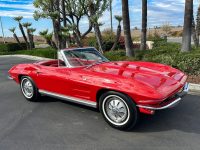
| Body Style: | Convertible |
| Exterior Color: | Riverside Red |
| Interior Color: | Red |
| Transmission: | 4-Speed Manual |
| Mileage: | 519 |
| Stock Number: | 6894 |
| VIN Number: | 40867S118510 |
| Drivetrain: | RWD |
| Engine: | 327/365hp |
| Location: | Coming in |
1965 Ermine White Corvette "Tanker" Coupe
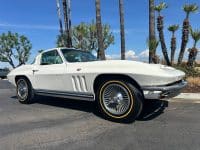
| Body Style: | Coupe |
| Exterior Color: | Ermine White |
| Interior Color: | White |
| Transmission: | 4-Speed Manual |
| Stock Number: | 6879 |
| VIN Number: | 194375S111648 |
| Drivetrain: | RWD |
| Engine: | 327/350hp |
| Location: | In Stock |
1966 Nassau Blue Corvette L72 Convertible
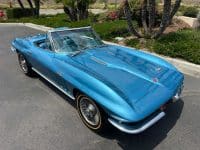
| Body Style: | Convertible |
| Exterior Color: | Nassau Blue |
| Interior Color: | Blue |
| Transmission: | 4-Speed Manual |
| Mileage: | 38967 |
| Stock Number: | 6828 |
| VIN Number: | 194676S114745 |
| Drivetrain: | RWD |
| Engine: | L72 427/425 HP |
| Location: | In Stock |
1967 Black Corvette L71 Convertible
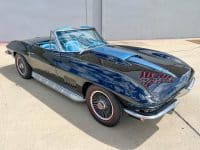
| Body Style: | Convertible |
| Exterior Color: | Black |
| Interior Color: | Blue |
| Transmission: | 4-Speed Manual |
| Stock Number: | NA |
| Drivetrain: | RWD |
| Engine: | 427/435hp |
| Location: | Off Site |
Price :
$139,900
1967 Marlboro Maroon Corvette L71 Convertible
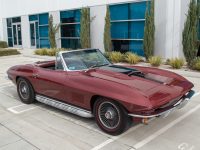
| Body Style: | Convertible |
| Exterior Color: | Marlboro Maroon |
| Interior Color: | Black |
| Transmission: | 4-Speed Manual |
| Stock Number: | NA |
| Drivetrain: | RWD |
| Engine: | L71 427/435hp |
| Location: | Off Site |
1967 Marina Blue Corvette L71 Convertible
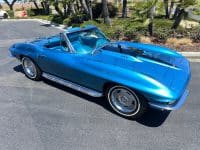
| Body Style: | Convertible |
| Exterior Color: | Marina Blue |
| Interior Color: | Bright Blue |
| Transmission: | 4-Speed Manual |
| Stock Number: | 6845 |
| VIN Number: | 194677S104512 |
| Drivetrain: | RWD |
| Engine: | 427/435hp |
| Location: | In Stock |
1967 Goodwood Green Corvette L71 Coupe the Famous "Wingate Corvette"

| Body Style: | Coupe |
| Exterior Color: | Goodwood Green |
| Interior Color: | Black |
| Transmission: | 4-Speed Manual |
| Mileage: | 58121 |
| Stock Number: | 6852 |
| VIN Number: | 194377S104083 |
| Drivetrain: | RWD |
| Engine: | L71 427/435hp |
| Location: | In Stock |
SOLD
1967 Tuxedo Black Corvette L68 Convertible
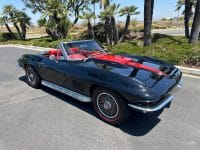 Sold
Sold| Body Style: | Convertible |
| Exterior Color: | Tuxedo Black |
| Interior Color: | Red |
| Transmission: | 4-Speed Manual |
| Mileage: | 10097 |
| Stock Number: | 6844 |
| VIN Number: | 194677S100386 |
| Drivetrain: | RWD |
| Engine: | 427/400hp |
| Location: | In Stock |
1967 Tuxedo Black Corvette L71 Convertible
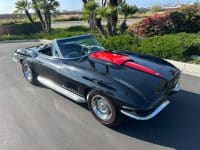
| Body Style: | Convertible |
| Exterior Color: | Black |
| Interior Color: | Black |
| Transmission: | 4-Speed Manual |
| Mileage: | 36554 |
| Stock Number: | 6393 |
| VIN Number: | 194677S101006 |
| Drivetrain: | RWD |
| Engine: | 427/435hp |
| Location: | Off Site |
1967 Rally Red Corvette L68 Coupe
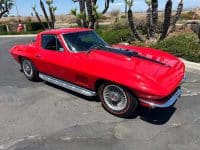
| Body Style: | Coupe |
| Exterior Color: | Rally Red |
| Interior Color: | Black |
| Transmission: | 2-spd automatic |
| Mileage: | 46812 |
| Stock Number: | 6861 |
| VIN Number: | 194377S117942 |
| Drivetrain: | RWD |
| Engine: | 427/400hp |
| Location: | In Stock |
1967 Marina Blue Corvette L36 427/390hp, Powerglide automatic
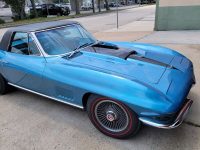
| Body Style: | Convertible |
| Exterior Color: | Marina Blue |
| Interior Color: | Blue |
| Transmission: | 2-spd automatic |
| Stock Number: | NA |
| Drivetrain: | RWD |
| Engine: | 427/390hp |
| Location: | Off Site |
Price :
$205,000
1969 Riverside Gold Corvette L88 Coupe
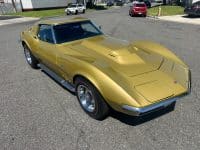
| Body Style: | Coupe |
| Exterior Color: | Riverside Gold |
| Interior Color: | Black |
| Transmission: | 3-Speed Automatic |
| Mileage: | 20661 |
| Stock Number: | 6830 |
| VIN Number: | 194379S721324 |
| Drivetrain: | RWD |
| Engine: | 427/500+hp |
| Location: | In Stock |
1970 Laguna Gray Corvette LS5 Convertible
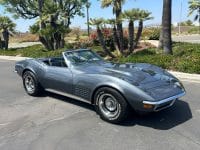
| Body Style: | Convertible |
| Exterior Color: | Laguna Gray |
| Interior Color: | Black |
| Transmission: | 4-Speed Manual |
| Mileage: | 7165 |
| Stock Number: | 6853 |
| VIN Number: | 194670S410867 |
| Drivetrain: | RWD |
| Engine: | 454/390hp |
| Location: | In Stock |
Price :
$74,900
1971 Moss Green Poly Mercedes-Benz 280SE 3.5 Coupe
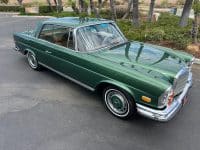
| Body Style: | Coupe |
| Exterior Color: | Green |
| Interior Color: | Saddle |
| Transmission: | 4-Speed Automatic |
| Mileage: | 71615 |
| Stock Number: | 6865 |
| VIN Number: | 11102612004381 |
| Drivetrain: | RWD |
| Engine: | 3.5L V8 |
| Location: | In Stock |
1971 Red Oldsmobile Cutlass Supreme Convertible
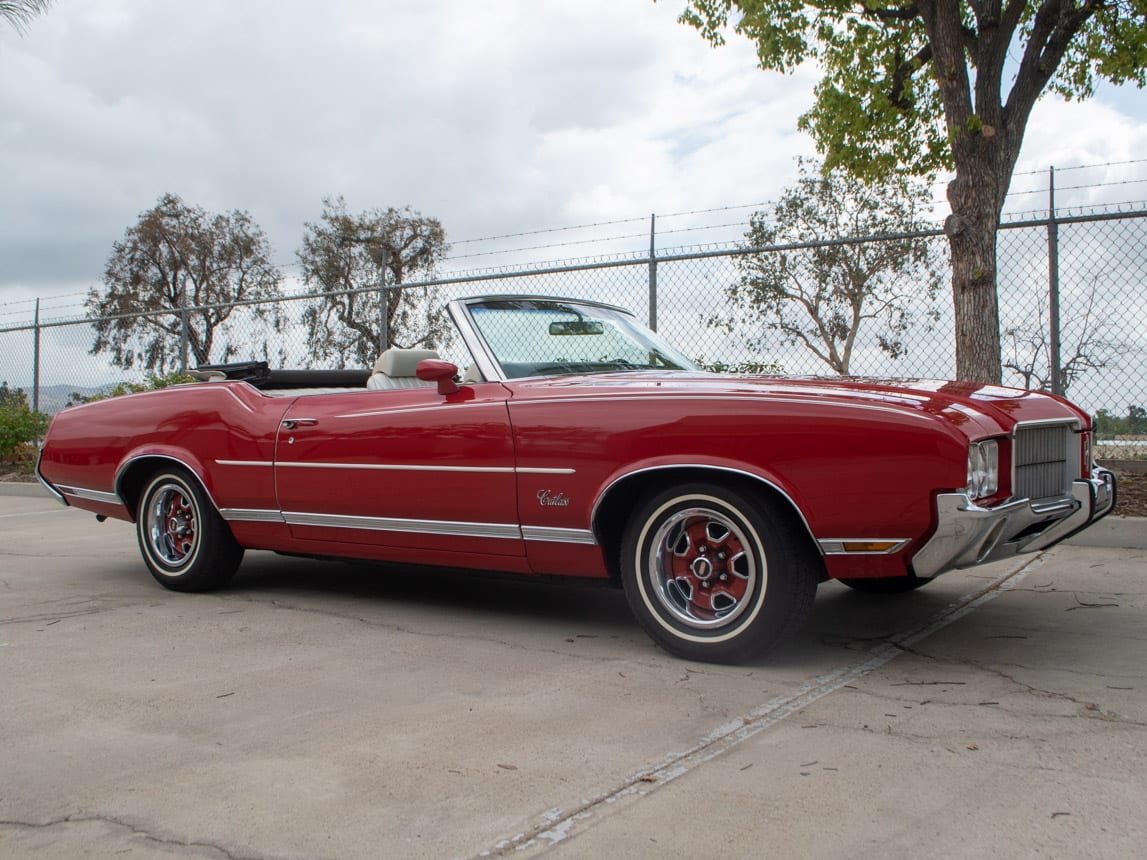
| Body Style: | Hardtop |
| Exterior Color: | Red w/White vinyl top |
| Interior Color: | Parchment |
| Transmission: | 3-Speed Automatic |
| Mileage: | 41000 |
| Stock Number: | 6385 |
| VIN Number: | 342671M216617 |
| Drivetrain: | RWD |
| Engine: | 350 cu in V8 |
| Location: | Not For Sale |
Price :
$59,900
1972 Lime Green Datsun 240Z Coupe

| Body Style: | Coupe |
| Exterior Color: | Lime |
| Interior Color: | Black |
| Transmission: | 4-Speed Manual |
| Mileage: | 116637 |
| Stock Number: | 6792 |
| VIN Number: | HLS3070964 |
| Drivetrain: | RWD |
| Engine: | 2.4L I6 |
| Location: | In Stock |
Price :
$42,900
1973 Mille Miglia Red Corvette Convertible
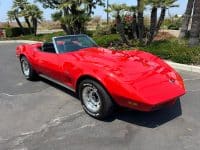
| Body Style: | Convertible |
| Exterior Color: | Mille Miglia Red |
| Interior Color: | Black |
| Transmission: | 3-Speed Automatic |
| Mileage: | 46846 |
| Stock Number: | 6866 |
| VIN Number: | 1Z67T3S428137 |
| Drivetrain: | RWD |
| Engine: | 350/250hp |
| Location: | In Stock |
Price :
$49,900
1974 Emerald Green Datsun 260Z
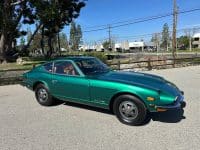
| Body Style: | Coupe |
| Exterior Color: | Green |
| Interior Color: | Tan |
| Mileage: | 48143 |
| Stock Number: | 6794 |
| VIN Number: | RLS30021416 |
| Drivetrain: | RWD |
| Engine: | 2.6L I6 |
| Location: | In Stock |
Price :
$75,000
1974 Classic White Corvette LS4 454 Convertible
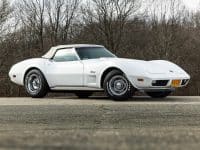
| Body Style: | Convertible |
| Exterior Color: | Classic White |
| Interior Color: | Dk. Blue |
| Transmission: | 4-Speed Manual |
| Mileage: | 20000 |
| Stock Number: | NA |
| Drivetrain: | RWD |
| Engine: | LS4 454/270hp |
| Location: | Off Site |
Price :
$44,900
1975 Porsche 911 V8 (Outlaw) Coupe

| Body Style: | Coupe |
| Exterior Color: | Yellow |
| Interior Color: | Black |
| Transmission: | 4-Speed Manual |
| Mileage: | 71312 |
| Stock Number: | 6862 |
| VIN Number: | 9115200158 |
| Drivetrain: | RWD |
| Location: | In Stock |
1977 Silver Corvette L82 Coupe
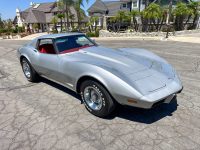
| Body Style: | Coupe |
| Exterior Color: | Silver |
| Interior Color: | Red |
| Transmission: | 4-Speed Manual |
| Mileage: | 10011 |
| Stock Number: | 6656 |
| VIN Number: | 1Z37X7S412009 |
| Drivetrain: | RWD |
| Engine: | L82 350/210hp |
| Location: | In Stock |
Price :
$39,900
1980 Black Corvette L82 Coupe

| Body Style: | Coupe |
| Exterior Color: | Black |
| Interior Color: | Oyster |
| Transmission: | 3-Speed Automatic |
| Mileage: | 35094 |
| Stock Number: | 6760 |
| VIN Number: | 1Z876AS411398 |
| Drivetrain: | RWD |
| Engine: | L82 350/230hp |
| Location: | In Stock |
Price :
$23,900
1981 Red Corvette Coupe
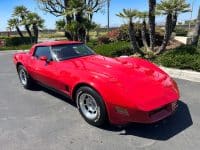
| Body Style: | Coupe |
| Exterior Color: | Red |
| Interior Color: | Red |
| Transmission: | 4-Speed Manual |
| Mileage: | 35637 |
| Stock Number: | 6826 |
| VIN Number: | 1G1AY8763BS427825 |
| Drivetrain: | RWD |
| Engine: | 350/190hp V8 |
| Location: | In Stock |
Price :
$39,900
1982 Silver Beige Corvette Collector Edition Coupe
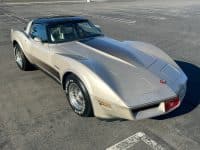
| Body Style: | Coupe |
| Exterior Color: | Silver Beige |
| Interior Color: | Sand Beige |
| Transmission: | 4-Speed Automatic |
| Mileage: | 29835 |
| Stock Number: | 6881 |
| VIN Number: | 1G1AY0780C5123497 |
| Drivetrain: | RWD |
| Engine: | 350/200hp Crossfire V8 |
| Location: | In Stock |
1995 White/Purple Corvette Indy Pace Car Convertible
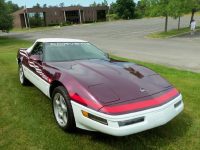
| Body Style: | Convertible |
| Exterior Color: | Purple/White |
| Interior Color: | Black/Purple |
| Transmission: | 4-Speed Automatic |
| Mileage: | 3000 |
| Stock Number: | NA |
| Drivetrain: | RWD |
| Engine: | 350/300hp |
| Location: | Off Site |


